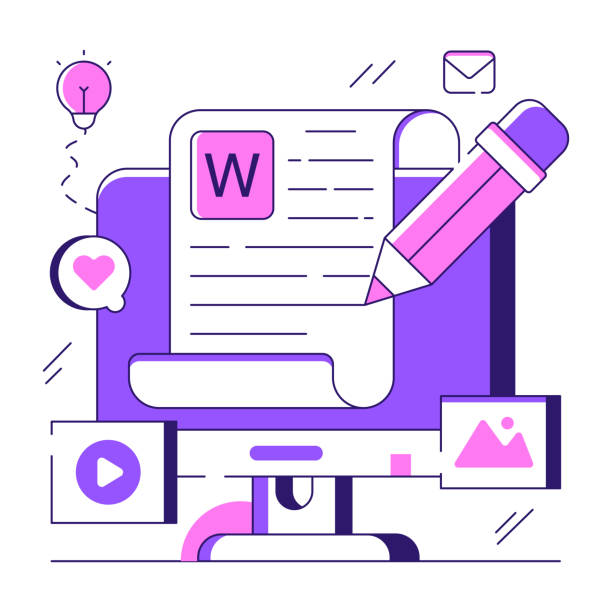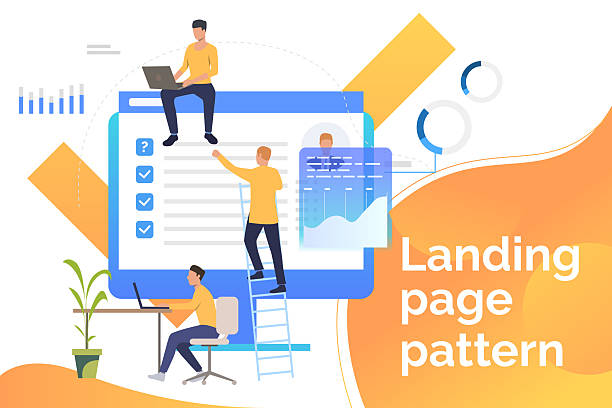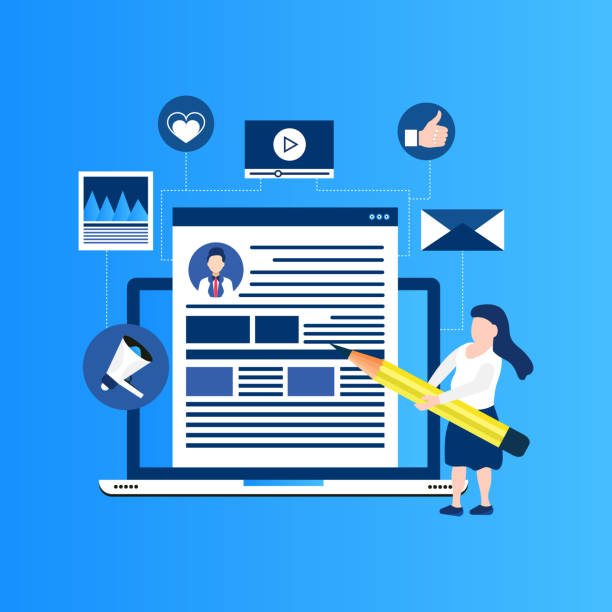Why Your Website Speed is Crucial

In today’s world, where everything is progressing at a breakneck speed, user expectations from websites have also significantly increased.
It is no longer possible to satisfy users with a slow-loading website.
It is a questionable aspect why some businesses still do not pay enough attention to this vital factor.
Numerous studies have shown that even a one-second delay in page loading can lead to a significant decrease in conversion rates and an increase in bounce rates.
Today’s user is not patient; if your site doesn’t load within a few seconds, they will easily turn to your competitors.
This issue not only negatively affects User Experience (UX – UX), but also directly impacts your SEO and ranking in search engines like Google.
Google and other search engines consider loading speed as a crucial factor in website ranking.
Therefore, fast website design is no longer a competitive advantage, but an absolute necessity.
Ignoring this issue can mean losing potential customers and decreased revenue.
This is a comprehensive analysis of the importance of speed for any online business, which should be considered a top priority.
If you want to succeed in the competitive web space, you must invest in increasing your website speed.
How much does losing business leads due to an unprofessional website cost you? Solve this problem forever with a professional corporate website design by Rasawab!
✅ Increased credibility and trust among potential customers
✅ Easier attraction of new business leads
⚡ Get a free consultation now!
Main Factors Affecting Website Speed

To achieve fast website design, we must first identify the main factors that affect loading speed.
These factors can be divided into two general categories: user-side factors (frontend) and server-side factors (backend).
In the frontend section, the size of images and videos, the number and size of CSS and JavaScript files, the use of heavy fonts, and the lack of code optimization are among the most important factors that reduce speed.
The more time the user’s browser spends downloading and processing these resources, the slower the site will appear.
In the backend section, server speed, hosting quality, complexity and inefficiency of server-side code, unoptimized databases, and the use of too many heavy plugins and extensions can lead to server response delays.
Even the choice of Content Management System (CMS) affects website speed; some CMSs are inherently lighter and faster than others.
This section provides a comprehensive explanation of all aspects that should be considered for improving website speed.
Understanding these factors will help you implement effective strategies to optimize your site and significantly improve its performance.
Any weakness in any of these sections can be a bottleneck for your website’s speed.
Frontend Optimization for Speed Increase
![]()
Frontend optimization is one of the most important steps towards fast website design.
This section includes all techniques that help reduce the size and number of user-side requests.
One of the key actions is compressing CSS, JavaScript, and HTML files.
By removing white spaces, comments, and extra characters, the size of these files can be significantly reduced.
Using optimized image formats like WebP and optimizing image compression without losing quality is another step.
Also, Lazy Loading images and videos, meaning they are only loaded when the user needs them, significantly increases the initial site speed.
Reducing the number of HTTP requests by combining CSS and JavaScript files and using CSS Sprites for icons is also very effective.
This is an educational and specialized approach to speed improvement that every developer should master.
Correct implementation of these techniques can create a significant difference in user experience and distinguish your site from your competitors.
| Frontend Optimization Technique | Description | Impact on Speed |
|---|---|---|
| Code Minification | Removing unnecessary characters from HTML, CSS, JS files | Medium to High |
| Image Optimization | Using appropriate formats (WebP), compression, resizing | High |
| Lazy Loading | Loading images and videos only when needed | High |
| File Concatenation | Reducing the number of HTTP requests by merging files | Medium |
| Browser Caching | Storing files in the user’s browser for subsequent visits | High |
Backend and Server Optimization for High Performance

In addition to frontend optimization, improving server-side performance is also essential for fast website design.
The first step in this direction is backend code optimization.
Using more efficient algorithms, reducing database queries, and ensuring optimized database structure can significantly reduce server response time.
For example, proper indexing of database tables in MySQL or PostgreSQL multiplies data retrieval speed.
Caching mechanisms on the server-side also play a crucial role.
Using caching for frequently accessed data, static pages, and query results eliminates the need to re-process requests and reduces the load on the server.
Tools like Redis or Memcached can be helpful in this regard.
Furthermore, upgrading server hardware, increasing RAM, and using SSDs instead of HDDs can directly impact processing speed.
Using HTTP/2 protocol instead of HTTP/1.1 also improves the communication speed between the server and the browser due to the ability to send parallel requests.
These are specialized solutions that require deep knowledge in server architecture and programming.
Their correct implementation will guarantee the smooth and fast performance of your website.
Do you have an e-commerce site, but your sales aren’t as expected? Rasawab solves your problem forever with professional e-commerce website design!
✅ Significant increase in conversion rates and sales
✅ Unmatched user experience for your customers
⚡ Click to get a free consultation with Rasawab!
Choosing Appropriate Hosting and CDN

Choosing a reputable and efficient hosting is the backbone of a fast website design.
Hosting quality has a direct and significant impact on your website’s loading speed.
Hosting types include shared hosting, VPS, dedicated server, and cloud hosting, each with its own advantages and disadvantages.
For small and new websites, shared hosting might be sufficient, but as traffic grows, you will need more powerful solutions like VPS or dedicated servers.
Cloud hosting, with its high scalability and exceptional stability, is also an excellent option for large and high-traffic websites.
In addition to hosting, using a Content Delivery Network (CDN) is a fundamental step to increase website speed.
A CDN stores your website’s static content (such as images, CSS, JavaScript) on multiple servers in different parts of the world.
When a user visits your site, content is delivered from the closest CDN server to them, which significantly reduces loading time.
This is a very important guidance for every webmaster.
Smartly choosing hosting and utilizing a CDN can make your site fast and accessible worldwide, providing a flawless user experience for your visitors.
The Vital Role of Images and Media in Loading Speed

Images and other media, while they can make your site more attractive, become one of the biggest obstacles to fast website design if not properly optimized.
High-quality and large-sized images can significantly increase page loading time.
The first step is to use image compression tools that reduce file sizes without a noticeable loss of quality.
Newer formats like WebP (from Google) or AVIF (future-oriented) can offer better compression than JPEG and PNG.
The next step is resizing images to appropriate dimensions.
There’s no need to display an image with dimensions of 4000×3000 pixels in a space of 500×300 pixels; this only imposes unnecessary bulk on your page.
Lazy Loading, mentioned in previous sections, is also a key solution for images and videos.
This method ensures that media content is loaded only when the user scrolls to its viewport on the page.
For videos, hosting them on platforms like YouTube or Vimeo and using embedding capabilities instead of direct server hosting can reduce the load on your server and optimize page loading speed.
This is a vital educational section where you learn how to achieve greater speed by correctly managing media.
Responsiveness and Its Impact on Fast Mobile Website Design

In the current era, as the use of mobile devices for internet access is increasing, website responsiveness and its speed on mobile are of vital importance.
Fast website design for mobile not only improves user experience but also directly impacts mobile SEO.
A Responsive Web Design website is designed so that its layout and content automatically adjust to the user’s device screen size.
This ensures that mobile users do not need to zoom in or scroll horizontally.
But responsiveness doesn’t just cover appearance; optimizations for speed must also be made.
For example, images should be provided in different sizes for different devices so that high-volume images are not downloaded for mobile.
Also, prioritizing content loading (Critical CSS) and removing unnecessary JavaScript codes for mobile can significantly increase loading speed.
Google increasingly emphasizes speed and mobile experience, so any improvement in this area will result in better search engine rankings.
This is an in-depth analysis of the correlation between responsiveness and mobile website speed.
Understanding this relationship is essential for anyone seeking success in the digital world.
Mobile-First Design is an approach where the website is first designed for mobile and then expanded for desktop; this approach naturally leads to better speed and performance on mobile.
| Feature | Impact on Mobile UX | Impact on Mobile SEO |
|---|---|---|
| Responsive Design | Automatic layout adjustment for each device, improved readability | Primary Google ranking factor, prevents SEO penalties |
| High Loading Speed | Reduced bounce rate, increased engagement, user satisfaction | Important ranking factor, improved Crawl Budget |
| Large Touch Buttons and Links | Ease of clicking and navigation with fingers | Indirect (UX improvement -> SEO improvement) |
| Readable Text without Zooming | Improved readability and eye comfort | Positive Google score for Mobile-Friendly |
| No Disruptive Pop-ups | Does not disrupt user experience | SEO penalty for disruptive interstitial pop-ups |
Website Speed Measurement Tools and Metrics

To ensure that your efforts in fast website design have paid off, you need tools for measuring and monitoring website speed.
Various tools are available that can assist you in this area and provide deep insights into your site’s strengths and weaknesses.
One of the most widely used tools is Google PageSpeed Insights, which not only measures your site’s speed based on Core Web Vitals such as LCP (Largest Contentful Paint), FID (First Input Delay), and CLS (Cumulative Layout Shift), but also offers suggestions for improvement.
Another tool is GTmetrix, which provides more detailed reports, including a Waterfall chart, showing how much time each element on the page requires to load.
Pingdom Tools is another popular tool for monitoring uptime and site speed.
These tools also provide the ability to test speed from various geographical locations.
Regular use of these tools and attention to the metrics they provide is an explanatory and very important step for maintaining and improving your website’s speed.
These tools help you identify hidden problems and resolve them before they negatively impact user experience.
Continuous monitoring of these metrics is an integral part of a long-term website speed strategy.
Are you tired of your e-commerce site having visitors but no sales? Rasawab solves your main problem with professional e-commerce website design!
✅ Significant sales increase with targeted design
✅ Flawless user experience for your customers
⚡ Get a free consultation!
Website Speed and Its Impact on SEO and User Experience

The relationship between fast website design, SEO, and User Experience (UX) is a direct and reciprocal one.
As previously mentioned, search engines like Google consider loading speed a crucial factor in page ranking.
A faster website is likely to achieve a higher ranking in search results, which means more traffic.
This is an important news for webmasters that Google is increasingly focusing on user experience.
Beyond SEO, loading speed has a direct and profound impact on user experience.
When a site loads quickly, users feel more satisfied, are likely to stay on your site longer, view more pages, and convert into customers.
Conversely, a slow site can lead to user frustration, quick abandonment (increased bounce rate), and their failure to return.
This issue not only negatively affects sales and conversions but can also harm your brand’s reputation.
Optimizing site speed for SEO and UX is a long-term investment that yields significant returns.
By improving speed, you not only satisfy Google’s algorithms but, more importantly, also meet the needs and expectations of your users.
This is a comprehensive analysis of the multifaceted impacts of site speed.
Future Trends and Maintaining Site Speed

The web world is constantly changing, and what is known today as fast website design may face new standards in the near future.
To maintain website speed and efficiency in the long term, one must look at future trends and prepare for them.
Using new technologies like WebAssembly for executing high-performance code in the browser, or Progressive Web Apps (PWAs) which offer a near-native app user experience and offline capabilities, are among these trends.
Also, the importance of optimizing for Core Web Vitals, which Google strongly emphasizes, will increase in the future.
Developers should continuously learn new tools and methods and apply them in their projects.
Continuous monitoring of site performance, not only with the introduced tools but also with server-side logging and monitoring systems, is crucial for timely identification and resolution of problems.
This is a fun aspect of web development, as there are always new challenges and opportunities for innovation.
Regular site maintenance and updates, including CMS, plugin, and theme updates, and the removal of dead or unnecessary code, also play an important role in maintaining speed.
Speed is an ongoing journey, not a fixed destination, and by considering these trends, one can always stay ahead and provide a flawless user experience.
Frequently Asked Questions
| Question | Answer |
|---|---|
| What is fast website design? | It refers to the process of building a website that is developed and launched in a short time, usually using ready-made platforms or optimized methods. |
| Why is speed important in website design? | High speed improves user experience, increases SEO ranking, and boosts the conversion rate of visitors into customers. |
| What tools are available for fast website design? | Content Management Systems (CMS) like WordPress, Joomla, and Drupal, drag-and-drop website builders, and fast web development frameworks. |
| What are the benefits of using a CMS for fast design? | Ready-made templates, various plugins, easy content management without extensive coding, and a large user community for support. |
| Does fast website design mean low quality? | Not necessarily. With appropriate tools and methods, a high-quality website can also be designed quickly. |
| What factors affect the speed of website design? | Project complexity, designer experience, selection of the right platform or tool, content and image readiness, and effective communication with the client. |
| How is responsive design considered in fast website design? | Most fast design templates and tools are responsive by default and require minimal or no adjustments. |
| How much does fast website design cost? | The cost varies depending on complexity, chosen platform, and additional services, but it is usually less than custom design from scratch. |
| How can the loading speed of a designed site be increased? | Image optimization, browser caching, file compression, CDN usage, and selecting suitable hosting. |
| When is fast website design a suitable option? | For small businesses, startups, personal websites, or projects that need quick launch and have a limited budget. |
And other services of Rasa Web advertising agency in the field of advertising
Smart Data Analysis: An innovative service to increase customer acquisition through marketing automation.
Smart Website Development: A specialized service for digital branding growth based on attractive UI design.
Smart Digital Branding: Designed for businesses seeking digital branding through intelligent data analysis.
Smart Google Ads: Designed for businesses looking to analyze customer behavior through marketing automation.
Smart Link Building: Professional optimization to increase website traffic using intelligent data analysis.
And more than a hundred other services in the field of internet advertising, advertising consulting, and organizational solutions
Internet Advertising | Advertising Strategy | Advertorials
Resources
- Website Speed Optimization on Zoomit
- Importance of Site Speed on Irantek
- Website Performance Improvement Tips on Digiato
- Website Loading Speed and SEO on Namatek
? With Rasawab Afarin, transform your business in the digital world! From powerful SEO to multilingual website design, we have comprehensive solutions for your growth and visibility.
📍 Tehran, Mirdamad Street, next to Bank Markazi, Southern Kazeroun Alley, Ramin Alley, No. 6
